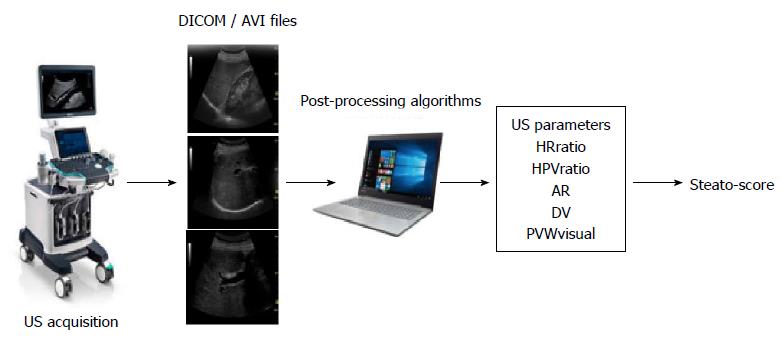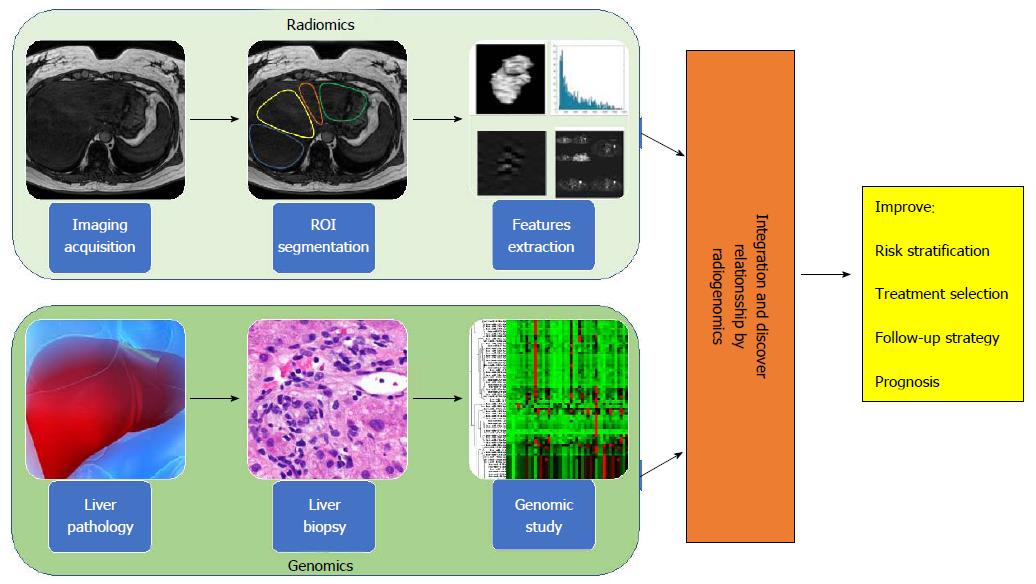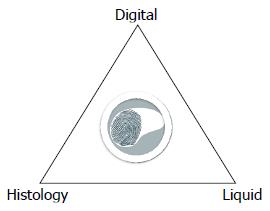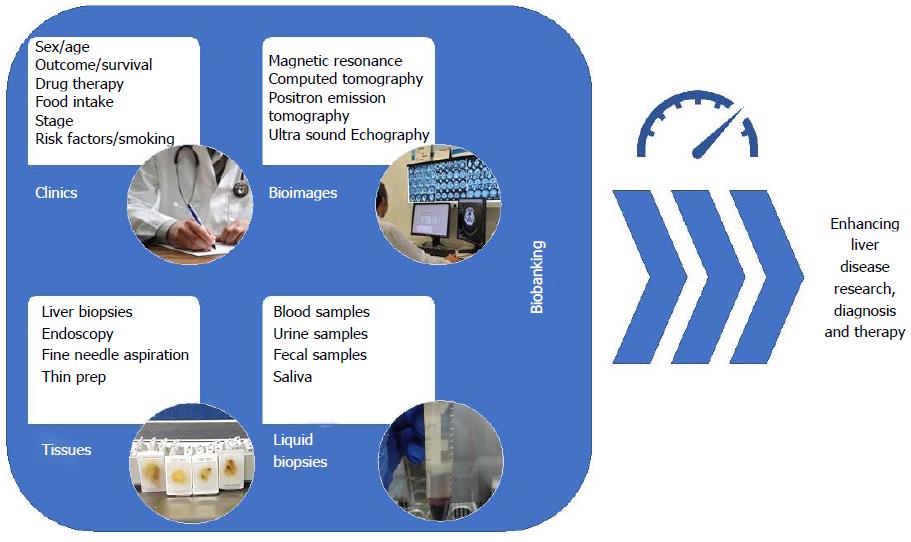Copyright
©The Author(s) 2018.
World J Hepatol. Feb 27, 2018; 10(2): 231-245
Published online Feb 27, 2018. doi: 10.4254/wjh.v10.i2.231
Published online Feb 27, 2018. doi: 10.4254/wjh.v10.i2.231
Figure 1 Quantitative multi-parametric assessment of intrahepatic fat by ultrasound.
Workflow of the image acquisition, processing and data elaboration leading to a score provided by an algorithm (Steato-score)[65]. US: Ultrasound; AR: Attenuation rate; DV: Diaphragm visualization.
Figure 2 Radiogenomic approach to liver disease.
Radiogenomics integrates radiomic data (upper panel), produced from the in silico extraction of features from bio-images, with genomic data (lower panel), coming from the study of bio-specimens with next generation sequencing technologies. Radiogenomics represents a powerful strategy to improve and personalize diagnostic accuracy, as well as measure response to therapy, leading to an overall improvement of patient management affected by liver disease.
Figure 3 A new three-dimensional view of the liver biopsy.
Digital biopsy, direct in vivo imaging of the whole liver, adds important pathophysiological and morphological context to liquid and invasive (percutaneous or surgical) liver biopsies that provide focal ex vivo analysis of circulating biomarkers and specimens of the liver respectively contributing to a three dimensional view for diagnosis and prognosis of liver disease.
Figure 4 Modern vision of bio-banking.
The collection of patient clinical data, tissue samples, liquid biopsies as well as bio-images, in organized datasets is defined as “bio-banking”. With the advent of omics sciences (i.e., proteomics and genomics) where a large number of biological specimens and associated data are needed for making a precision medicine approach to the patients collaborative studies across centers are essential to maximizing patient recruitment. Equally, accessible well-structures data stores permit re-use and re-examination of data reducing the cost of subsequent studies. In this context, the field of bio-banking has the possibility to enhance research on liver disease as well as improve diagnostics and therapeutics.
- Citation: Mancini M, Summers P, Faita F, Brunetto MR, Callea F, De Nicola A, Di Lascio N, Farinati F, Gastaldelli A, Gridelli B, Mirabelli P, Neri E, Salvadori PA, Rebelos E, Tiribelli C, Valenti L, Salvatore M, Bonino F. Digital liver biopsy: Bio-imaging of fatty liver for translational and clinical research. World J Hepatol 2018; 10(2): 231-245
- URL: https://www.wjgnet.com/1948-5182/full/v10/i2/231.htm
- DOI: https://dx.doi.org/10.4254/wjh.v10.i2.231












